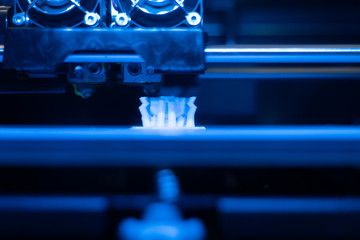Do you want to learn about the exciting In this comprehensive guide, we will explore the world of metal casting with 3D printing. You’ll discover the advantages of this innovative approach, the different types of 3D printing technologies available, and how it can revolutionize mold making. We’ll also discuss the benefits and limitations of using 3D printing in metal casting. Get ready to dive into the fascinating intersection of technology and craftsmanship!
Overview of Metal Casting Processes
Metal casting 3D is a versatile process that allows you to produce accurate and repeatable parts in various industries. When it comes to metal casting, 3D printing can play a significant role. With 3D printing, you can create 3d printing metal molds and patterns for casting, making the process faster and more efficient. Whether you need to create metal molds or print patterns for casting, metal casting 3D printing can be a game-changer.
One of the benefits of 3D printing in metal casting is the ability to create complex shapes and intricate designs. With traditional methods, it can be challenging to achieve the same level of detail. However, with 3D printing, you have the freedom to design and create casting 3d printed parts with precision.
Additionally, 3D printing allows for faster lead times. Traditional mold-making processes can be time-consuming and labor-intensive. With 3D printing, you can quickly produce 3d printing molds for metal casting and patterns, reducing the overall production time.
Furthermore, 3D printing for metal casting also offers cost savings. By eliminating the need for expensive tooling and reducing material waste, you can save money on production costs.
Advantages of Metal Casting With 3D Printing
By utilizing 3D printing in your metal casting process, you can benefit from faster production, cost savings, and the ability to create complex geometries. 3D printing allows for the creation of intricate patterns and molds with high precision and accuracy. This eliminates the need for traditional pattern-making methods, which can be time-consuming and costly.
With 3D printing, you can produce patterns and molds directly, reducing the overall production time and costs associated with metal casting 3d printed mold making. Additionally, 3D printing enables you to create complex geometries that would be difficult or impossible to achieve using traditional casting methods. This opens up new possibilities for design and innovation in metal casting.
Furthermore, the flexibility of 3D printing allows for easy iteration and modification of designs, reducing the risk of errors and improving the overall quality of the final product. Overall, integrating 3D printing into your metal casting process can greatly enhance efficiency, cost-effectiveness, and design capabilities.
Types of 3D Printing Technologies for Metal Casting
To explore different 3D printing technologies for metal casting, you can consider options like fused deposition modeling (FDM) and stereolithography apparatus (SLA). FDM is a popular choice for creating plastic patterns used in investment casting and sand casting. It works by extruding melted plastic layer by layer to build the desired shape. FDM is known for its affordability and versatility, as it can produce complex geometries and large patterns.
On the other hand, SLA is commonly used to replace traditional wax patterns for investment casting. It uses a process called photopolymerization to solidify liquid resin layer by layer, resulting in highly detailed and dimensionally accurate patterns. SLA offers a wide range of material options and has excellent surface finish.
Both FDM and SLA can significantly reduce lead times and costs in metal casting processes, making them valuable tools for manufacturers. By leveraging these 3D printing technologies, you can enhance your metal casting capabilities and achieve faster production times with more intricate designs.
3D Printing Patterns for Mold Making
3D printing patterns for mold making is a well-established practice in the metal casting industry. It allows for the creation of complex and detailed patterns that are used to make molds for investment casting and sand casting processes. With the use of technologies like stereolithography (SLA) and fused deposition modeling (FDM), 3D printers can produce smooth and precise patterns that accurately replicate the final part.
SLA printers, such as the Formlabs Form 3 desktop SLA 3D printer, are particularly suitable for metal casting workflows due to their high precision and wide material library. On the other hand, FDM 3d printer metal casting can be used to create non-expendable patterns for sand casting. This combination of 3D printing and metal casting processes offers several benefits, including greater design freedom, shorter lead times, and reduced costs compared to traditional pattern-making and mold making methods.
However, it is important to note that there are limitations to 3D printing in metal casting, such as the size constraints of common printing technologies and the requirement for familiarity with CAD software. Nonetheless, 3D printing patterns for mold making is a valuable tool in the metal casting industry, providing improved efficiency and flexibility in the production of metal parts.
Direct 3D Printing of Casting Molds
When considering direct 3D printing of casting molds, you can eliminate the need for traditional pattern-making processes and create molds directly from the 3D printed design. This innovative approach offers several advantages:
Increased efficiency
With direct 3D printing for casting molds, you can significantly reduce the time and effort required for mold production. Traditional pattern-making processes can be time-consuming and labor-intensive, but with 3D printing, you can quickly create complex mold designs and bring them to life in a fraction of the time.
Design flexibility
3D printing allows for greater design freedom, enabling you to create intricate and detailed molds that may not be possible with traditional methods. This opens up new possibilities for creating complex geometries and customized molds tailored to specific casting requirements.
Cost savings
By eliminating the need for pattern-making and reducing material waste, direct 3D printing of casting molds can lead to cost savings. With 3D printing, you only use the material needed for the mold, minimizing waste and reducing material costs. Additionally, the faster production time can result in overall cost savings for casting processes.
Benefits and Limitations of 3D Printing in Metal Casting
One of the benefits of using 3D printing in metal casting is the ability to create complex geometries and intricate designs. With traditional casting methods, it can be difficult and time-consuming to produce intricate shapes and designs. However, 3D printing allows for the creation of highly detailed patterns and molds that can capture even the most intricate details. This opens up new possibilities in terms of design and innovation in metal casting.
Another advantage of 3D printing in metal casting is the reduction in material waste. Traditional casting methods often require the production of multiple molds and patterns, which can result in a significant amount of material waste. However, with 3D printing, patterns and molds can be created on-demand, reducing the amount of material needed and minimizing waste.
Additionally, 3D printing in metal casting offers shorter lead times. Traditional casting methods often require the production of molds and patterns, which can take a significant amount of time. However, with 3D printing, patterns and molds can be produced quickly and efficiently, reducing the overall lead time of the casting process.
Overall, the use of 3D printing in metal casting provides greater design freedom, reduces material waste, and shortens lead times. It is a valuable tool for creating complex geometries and intricate designs in metal casting processes.
Comparison of 3D Metal Printing and Metal Casting
If you’re considering different manufacturing methods, you may find it helpful to compare the benefits and limitations of 3D metal printing and traditional casting.
Speed and Cost
3D metal printing is generally faster and cheaper than traditional casting methods. It eliminates the need for pattern-making and mold-making processes, reducing lead times and costs. However, direct mold printing technologies like binder jetting can have high machine costs.
Design Freedom
3D metal printing allows for the realization of complex geometries and parts with multiple cores. It provides greater design freedom compared to traditional casting methods, which are limited by mold-making techniques.
Material Limitations
Traditional casting methods can handle a wide range of metals and alloys, while 3D metal printing is limited to specific metal powders. Additionally, the build envelopes of 3D metal printing are generally smaller than those of metal castings, limiting the size of the produced parts.
Metal Casting With 3D Printing at Metaltek
MetalTek uses 3D metal printing technologies to enhance its metal casting processes and meet customer needs. By incorporating 3D metal printing into their workflow, MetalTek is able to improve efficiency and reduce costs. With the use of technologies like fused deposition modeling (FDM) and stereolithography apparatus (SLA), MetalTek can create plastic patterns for investment casting and sand casting.
These 3D printed patterns are more dimensionally accurate and can be produced quickly, eliminating the need for traditional pattern-making processes. This not only saves time but also reduces the cost associated with tooling. Additionally, MetalTek can use SLA to replace traditional wax patterns for investment casting, resulting in more precise patterns and improved quality of the final metal parts.
The use of 3D metal printing allows MetalTek to have greater design freedom, shorter lead times, and improved overall customer satisfaction. MetalTek continues to explore and invest in the best use of 3D printing technology to further enhance their metal casting capabilities and meet the evolving needs of their customers.



